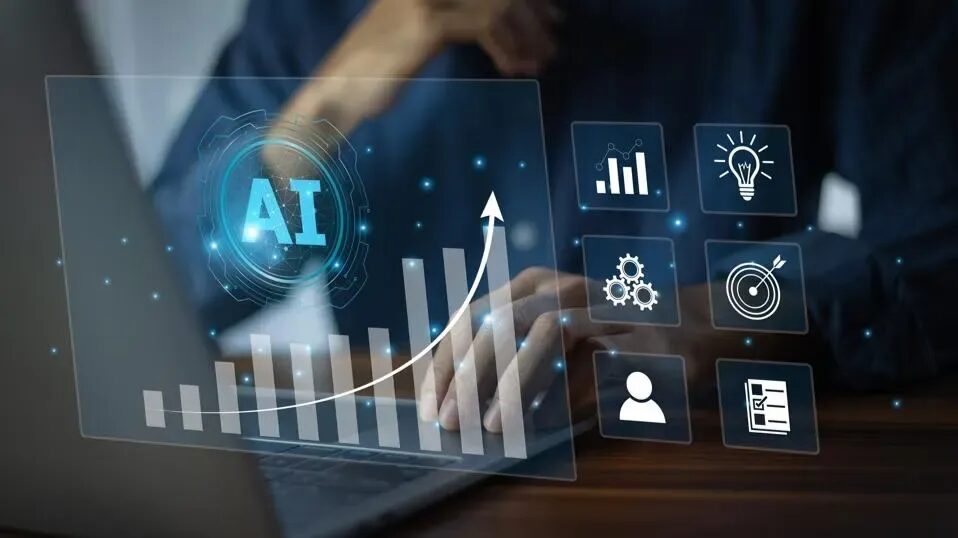The Biggest Technology Trends In Wine And Winemaking
30 May 2022
It is not often that I am able to combine two of my life’s passions: future tech and wine. When we think about the wine business, the images that come to mind might be more of vineyards stretching across the French countryside than of robots and digital transformation. But the fact is that the industry has always been driven by science, technology and innovation. Today, things are no different. The latest wave of technology-driven change is focused on artificial intelligence (AI), the internet of things, augmented reality and blockchain.

In line with other industries, winemakers and sellers are facing challenges posed by climate change, as well as growing demand from consumers for traceability and accountability across their supply chains. Technologies such as these will help create new solutions as well as drive efficiencies and reduce waste. They are also leading to new ways for us as consumers to experience drinking wine. So, here’s a rundown of how these trends are changing the way we make, sell and enjoy wine.
Augmented Reality and Smart Packaging
Wine labels are set to become far more sophisticated. Information will be accessible via QR codes and even AR, giving buyers insights into the produce they are buying as well as the production processes and conditions in which they were made. The Living Wine Labels app powers the “confessions” stories of those featured on bottles of 19 Crimes, with one bottle of Californian red even offering worldly advice from none other than Snoop Dogg. Sparflex has developed AR wine foil which launches animations and stories straight from the label, as has Californian wine producer Rabble, with labels that come to life with dramatic animations using medieval-style illustrations. Some of this might seem gimmicky but marketers today firmly understand the value of building stronger connections between brands and users by developing technology-driven experiences like these.
Blockchain and NFTs
Anyone with an eye on future trends in the wine and drinks industry will have spotted the impact that is already being made by blockchain and in particular, NFT technology. It is the very fact that NFTs are “non-fungible” – meaning they are unique – that makes them valuable, as they can be linked to real-world items (like a bottle of wine) and used as a certificate of authenticity or provenance. They can be sold purely as collectible artworks inspired by great real-world wines – as is the case with BitWine, a collection of 1,000 entirely digital wines designed by sommelier Lauren Vaile. After all, if we are all going to be living in the metaverse, then why not have a cellar stocked with virtual wines to show off to your friends when they come to visit? If you prefer to invest your money in real wine, then the WiV platform might be more appealing. Its NFTs are all linked to bottles of actual wine that are securely stored, meaning that if the owner wants to drink them, they can swap the NFT for the bottle. On the other hand, if they simply want to sell it on for a profit, they can just pass the NFT to the new owner.
Wine Block Chain is a platform that promises to help establish trust and transparency across the industry by allowing every stage of the process to be recorded in secure, tamper-proof blockchain ledgers. Developers EZ Lab recently completed a trial, in partnership with Ernst & Young, in which a bottle was traced and certified from vineyard to bottle. All of the information can be verified through a smart tag that can be scanned by the customer with their smartphone, from when it was bottled to which pesticides and fertilizers were used during production.
AI and Automation
WineCab has created an AI-driven wine wall complete with robotic sommelier. The huge installation – starting at around $179,000 if you are interested – uses AI to choose the perfect wine to go with your meal before its robotic arm transports the bottle from the wall to its dispenser. The perfect toy for multimillionaire wine fans to add to their mansions.
For a slightly more affordable option, Preferabli (formerly known as Wine Ring) is a recommendation platform not just for wines but also for beers and spirits, that learns about user preferences and how to match the perfect drink to meals. Designed to be used both by merchants and consumers, it is available as a smartphone app or built into models of LG’s Signature range of wine cellar.
Many uses have also been found for AI in the growing process – including the computer vision solutions provided by Tule that use video to monitor plants as they grow, and provide feedback telling growers when the water levels are adequate and what levels of “stress” the vines are under.
Ted, the vineyard robot developed by Naio Technologies, helps to tend crops and clear away weeds, reducing the need for growers to put potentially harmful herbicides into the soil.
Green Brain is a project that harnesses the power of satellite imagery along with AI to monitor the health of crops across entire vineyards, giving growers insights into how well irrigation is working as well as the health of their crops, offering early warning when they might be at risk from disease or pests.
Other systems use automated drones rather than satellites, such as the one used by Spanish producer Bodegas Ayuso, which combines drones with satellite imagery, ground sensors and local weather station data. All of the data is crunched by AI algorithms to provide insights that can be acted on in real-time.
Related Articles
Bridging The AI Divide: Why Europe’s AI Future Depends On Transformative Innovation
By now, “smart” versions exist of just about every home appliance, gadget and gizmos we can think of. However, manufacturers continue[...]
Forget ChatGPT: Why AI Agents Are The Real Game-Changer For Financial Services
By now, “smart” versions exist of just about every home appliance, gadget and gizmos we can think of. However, manufacturers continue[...]
Agentic AI Enters Management: Taco Bell’s Byte-Sized Approach To Virtual Restaurant Leadership
By now, “smart” versions exist of just about every home appliance, gadget and gizmos we can think of. However, manufacturers continue[...]
Beyond ChatGPT: The 5 Toughest Challenges On The Path To AGI
By now, “smart” versions exist of just about every home appliance, gadget and gizmos we can think of. However, manufacturers continue[...]
The AI Leadership Crisis: Why Chief AI Officers Are Failing (And How To Fix It)
By now, “smart” versions exist of just about every home appliance, gadget and gizmos we can think of. However, manufacturers continue[...]
15 Mind-Blowing AI Statistics Everyone Must Know About Now
By now, “smart” versions exist of just about every home appliance, gadget and gizmos we can think of. However, manufacturers continue[...]
Sign up to Stay in Touch!
Bernard Marr is a world-renowned futurist, influencer and thought leader in the fields of business and technology, with a passion for using technology for the good of humanity.
He is a best-selling author of over 20 books, writes a regular column for Forbes and advises and coaches many of the world’s best-known organisations.
He has a combined following of 4 million people across his social media channels and newsletters and was ranked by LinkedIn as one of the top 5 business influencers in the world.
Bernard’s latest book is ‘Generative AI in Practice’.










Social Media